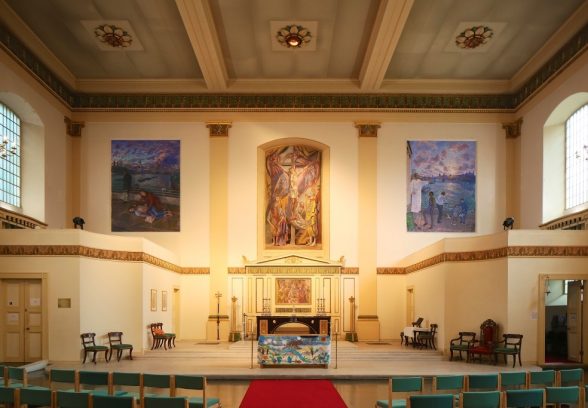This website uses cookies
This website uses cookies to enable it to function properly and to analyse how the website is used. Please click 'Close' to accept and continue using the website.



The Chancellor of the Diocese of Southwark has upheld the objections of the Twentieth Century Society to the radical alteration of the Thomas Ford 1951 Festival of Britain interior at St John’s Waterloo. He concluded that the proposed Eric Parry scheme would cause serious harm to the listed building and that the public benefits of the proposed scheme were insufficient to outweigh the harm.
Clare Price, Senior Conservation Adviser at the Society, commented: “We welcome the findings of the court. This case involved complex arguments on the significance of the 1951 interior of this Grade II* listed church. The Chancellor has considered the proposals in great detail before delivering his judgment. We are very supportive of the parish’s wish to explore ways of expanding their vibrant mission in the Waterloo area and look forward to further discussions to find a way to achieve this while respecting the listed building.”
St John’s, situated at the southern end of Waterloo Bridge, in London, was originally built in 1829, but after being bombed in the Second World War, was partially re-constructed and entirely refitted by Thomas Ford as the Festival of Britain church in 1951. During the South Bank exhibition it was used not just for services but for concerts and events.
Features include a large mural by renowned artist Hans Feibusch, a double decker pulpit and lectern, altar and candlesticks, all designed as a ‘set piece’ by Thomas Ford, a curved cornered Lady Chapel and vestry and a finely crafted Regency style anthemion frieze, original light fittings, and Juliette balconies.
The Eric Parry scheme included the removal of two chapels, the pulpit and lectern, and altar rails, and the creation of new side galleries with angled walls, and storage underneath.

Become a C20 member today and help save our modern design heritage.